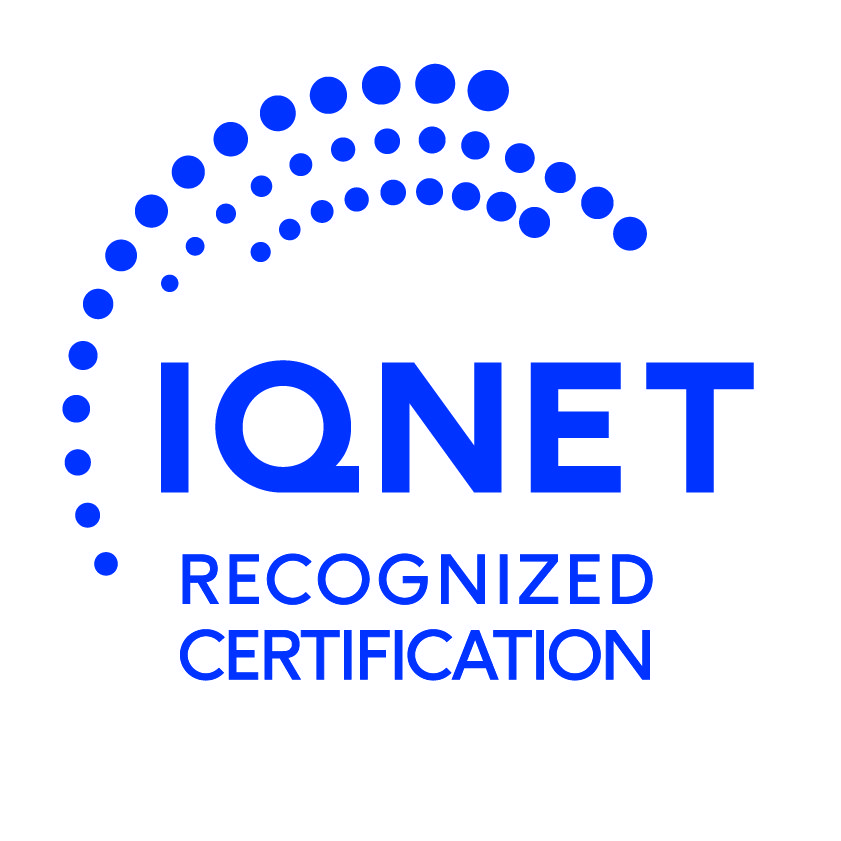What’s New in Microsoft Teams for 2021 – Part 2
Last week Microsoft held their spring Ignite event announcing a host of new features and updates for Microsoft Teams. In Part 1 we looked at the new features and updates for the Meeting and Webinar functions. In this post, we will look at the rest of the features and updates announced for Teams including; Chat and Collaboration, Security, Customisation, Calling and Teams Management.
Chat and Collaboration
Microsoft Teams Connect
Teams Connect makes it easy to share channels with anyone, internal or external to your organisation. The shared channel will appear within an individual’s primary Teams tenant alongside other teams and channels, making it easy for everyone to access it in their workflow. In the shared workspace, you can leverage Teams rich collaboration capabilities: chat, meet, call, share and co-author documents in real-time. Admins have access to granular controls, allowing their organisation to stay in control of how external users access data and information. Teams Connect is available today in private preview and will roll out broadly later this calendar year.
.
Teams and Dynamics 365 business process experience
Stay in the flow of work with new Dynamics 365 Sales, Marketing, Customer Service, Field Service, and Teams connected experiences. Take advantage of Teams capabilities like chatting, sharing documents, and managing meeting and webinar invites without leaving the Dynamics 365 workspace. You can also securely access, update, and share Dynamics 365 records from within Microsoft Teams. These features will be rolling out in April.
Task publishing checklist and editing capabilities
Task publishing enables corporate teams to create and publish tasks, for example to all frontline locations and other configurable attributes of a distributed workforce. Now, corporate teams can add a checklist to the tasks they publish, enabling them to include rich details on what needs to get done within each task and drive deeper clarity from top-down. Corporate teams can also edit published tasks without having to recall the entire task list. These features will be available later this month.
Approvals app updated with templates, attachment capabilities, and markdown support
Approvals in Microsoft Teams enables you to easily create, manage, and share approvals directly from your workflow. Starting in April, new out-of-the-box and customisable templates will provide a repeatable structure for common approvals—like requesting time off or paid leave. Coming later this month, you’ll be able to attach files directly from Microsoft OneDrive and SharePoint, as well as attach a generic link for content that is hosted outside of Microsoft 365, so your request will always have the latest content. Finally, this month Microsoft are also adding full Markdown support in both adaptive cards and the details’ view, so you can ensure all your approvals are formatted correctly for all your approval processes.
Teams mobile experience enhancements
This month, Microsoft are announcing several new capabilities to enhance the mobile experience. First, the mobile app will have an updated visual look and feel that includes new headers, icons, and styling along with the ability to automatically switch to dark theme when you set your device appearance setting to dark. Other updates include the ability to access files stored in Teams while offline, a new search experience with suggestions, the ability to pin chats, and an expanded library of emojis and the ability to trim GIFs directly in the Teams app. These features are coming to iOS first, followed by Android.
Security, compliance, and privacy
End-to-end encryption option for Teams 1:1 VoIP calls
Microsoft Teams will support an option to use end-to-end encryption (E2EE) for ad hoc 1:1 Teams VoIP calls, providing an additional option for conducting sensitive online conversations. To support customer security and compliance requirements, IT will have full control of who can use E2EE in the organisation. E2EE for Teams 1:1 VoIP calls will be available to commercial customers in preview in the first half of this calendar year, expanding support for online meetings later.
Teams Multi-Geo support
To help customers meet data residency requirements, Microsoft 365 Multi-Geo has been extended to include Microsoft Teams, allowing organsations to specify where their Teams customer data sits, down to the team and end-user. Teams Multi-Geo will begin rolling out in April.
Disable attendee video during meetings
Disable video will allow a meeting organiser to disable the video of an individual or all attendees. As a meeting safety capability, disable video can help organisers and educators running meetings or classes have more control to better manage undesired disruptions. Similar to hard mute, once an attendee has had their video disabled, they cannot override the organiser. Disable video will be rolling out later this year.
Invite only meeting options
A new lobby setting will be available in Teams meeting options where only meeting participants who were explicitly invited to the meeting are able to join directly. Once applied, any participants who were not invited directly will be directed to the lobby where they will wait to be admitted. Invite only will be rolling out later this month.
Safe Links for Teams
Safe Links helps protect your business against malicious sites when people click links in Office apps. Safe Links for Teams will be rolling out later this month.
Co-author in encrypted docs using Office Apps
Multiple users can now simultaneously edit an Office document that has been encrypted using Microsoft Information Protection, including using auto-save. Co-authoring in encrypted docs is supported through the Office apps, Office Web Apps, and Teams and is available now!
Calling
Operator Connect
Operator Connect is a new way for customers to simply and quickly enable PSTN calling for Teams, using services from non-Microsoft telephony operators. Administrators can select their desired operator in the Teams Admin Centre, and provision phone numbers to their users in just hours, with no required hardware. Operator-managed technical support and service level agreements are available to help with deployment and meet operational requirements. Operator Connect will enter public preview later this year.
Operator Connect Conferencing
Operator Connect Conferencing allows you to add non-Microsoft telephony operator dial-in numbers to a Microsoft Audio Conferencing bridge. You can maintain your preferred non-Microsoft telephony operator relationships, diversify your PSTN infrastructure to include additional non-Microsoft telephony operators, and take advantage of expanded geographic dial-in coverage. Operator-managed technical support and service level agreements are available to help with deployment and meet operational requirements. Operator Connect Conferencing will enter private preview next quarter.
Microsoft Calling Plan expansion
Microsoft Teams Calling plans provide a fast and simple way to deploy calling in Microsoft Teams with no on-premises equipment. We are expanding our geographic coverage to eight new markets beginning next month and completing by end of June 2021. New markets include New Zealand, Singapore, Romania, Czech Republic, Hungary, Finland, Norway, and Slovakia, meaning that customers in 26 markets can now use Microsoft-provided calling plans to place and receive PSTN calls in Teams.
Endpoint transfer
Teams makes it easy to place and receive calls from several different endpoints, including desktop and mobile devices, but sometimes you need to move locations or devices to finish your call. The new endpoint transfer capability will allow you to seamlessly move your calls between different devices, such as from your laptop to mobile phone, without any interruption in call service or quality. Endpoint transfer will be available early next quarter.
Low data mode
Whether you want to preserve data or are just in a location with a poor or limited network connection, sometimes it’s helpful to limit the amount of data you’re using during a video call. A new low data mode is now available, allowing users to cap the amount of data that will be used during Teams video calls as well as establish different settings based on network availability so that the setting can be turned on always, or only while on cellular networks.
Custom development and Power Platform
Teams interoperability with Azure Communication Services
Now in public preview, we’re excited to announce Teams interoperability with Azure Communications Services. Use Azure Communications Services to deliver a better customer experience by easily connecting your employees who use Microsoft Teams with users of a custom-built app via voice, video, or chat.
App customisation and branding
Now you can customise app properties like app name, description, icons, and more to deliver a branded app experience right within Teams. This feature is now available in the Teams Admin Centre.
Teams automation capabilities
Later this month, you will be able to create an action from a message, enabling you to make a Power Automate workflow directly from the message on the spot. Microsoft also adding a new automation category in the Teams app store full of new Power Automate templates, providing an easy starting point for your automation workflows.
Updates to Dataverse for Teams limits and upgrades
Microsoft are increasing the Dataverse for Teams environment limit for larger tenants from the current 500 to 10,000. Also, you will now be able to seamlessly upgrade your Dataverse for Teams environments to take advantage of the full premium license capabilities—your existing apps and data are automatically ready to go.
Management
Secure and scale your meeting rooms with ease using Teams Rooms Managed Services
Microsoft are announcing a new AI-driven service that delivers proactive Teams Rooms management. The new service uses Microsoft Defender for Endpoint to provide advanced threat protection capabilities that can detect incidents, vulnerabilities, and missing security KBs. The service will take action based on these detections to apply necessary updates, keeping your rooms secure and ready to go. They have also added the ability to detect developing incidents based on complex patterns seen across multiple signals over time. The service will then take proactive steps to remediate on your behalf, to remove disruptions.
Remote device provisioning
We are simplifying the experience of setting up Teams Android devices remotely from the Teams Admin Centre. Remote provisioning eliminates the need to physically handle devices to sign in. Instead, once the MAC address is added in the Teams Admin Centre, technicians just need to install the device, connect to the network, and enter a verification code. After that, IT admins can successfully complete the provisioning remotely.
Real-time telemetry
The new real-time telemetry for meetings enables IT admins and helpdesk to troubleshoot problems during meetings or the events for quick resolution. The data is generated in the Teams Admin Centre reports and meetings reports and provides detailed information around different network parameters like jitter, packet loss, latency, and frames per second—all while using audio, video, and screen sharing session. This functionality will ship in the first half of the calendar year.
Anonymous user usage reports
While all Teams reporting can only be viewed by approved roles, we are adding an extra layer of data privacy to protect user data even more. Now, you have the option to anonymise user data, protecting user privacy while viewing, downloading, sharing, and accessing the Teams usage report data. Once enabled, personally identifiable information like username, email addresses, and Active Directory IDs will be anonymized. This capability will be available by the end of March.
Teams user usage report in Teams client
Teams user usage report in the Power BI analytic hub provides users with a view into their Teams activities and usage. You can generate insights and metrics on a per-team and cross-team basis to understand a user’s interaction with peers and across the organization. The reports are generated with privacy in mind; individual users can view their own data. This reporting capability will be available by end of March. Directory IDs will be anonymized. This capability will be available by the end of March.
App risk evaluation
Coming soon, Teams admins will be able to view the security, compliance, and data privacy details for apps coming from Microsoft Cloud App Security. This will help Teams admins save time on security reviews and enable more focused selection-based security specifications, resulting in increased app quality. This capability will be rolling out this year.
Streamline the experience of managing guest users
Last month, we turned on guest access by default to simplify an inclusive meeting experience. This month, we are adding scheduled access reviews for guests across all Teams and Groups by default. The system will automatically schedule periodic guest access reviews across Teams, delivering better identity security hygiene.
Policy enhancements in Teams Admin Center
New custom policy packages will empower Teams admins to configure their own set of policy packages tailored to users with similar roles in their organization. We are also adding the capability to assign policy package to a group so you can assign multiple policies to a group of users. These policies enhancements will be available during March.
On top of the features introduced over the past 12 months, Microsoft have a host of exciting new features being rolled out in the coming months. Zoom or at least the Zoom brand was the success story at the start of the pandemic and even now I hear people refer to the “Zoom call” regardless of the tool or app they are using in much the same way as many of us in Ireland and the UK referred to any vacuum cleaner as a “Hoover” in the 80s. Zoom is an excellent communication tool and will continue to grow but I believe that Teams has surpassed Zoom in terms of its productivity value to organisations in business and in education.














